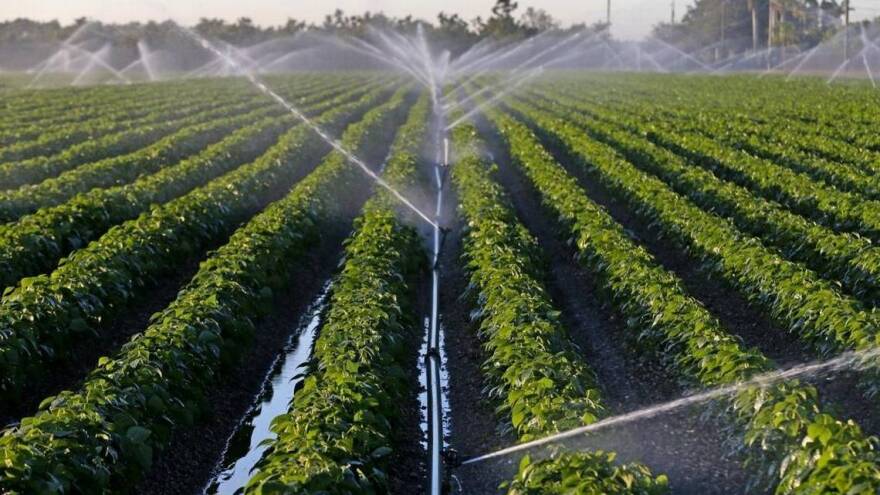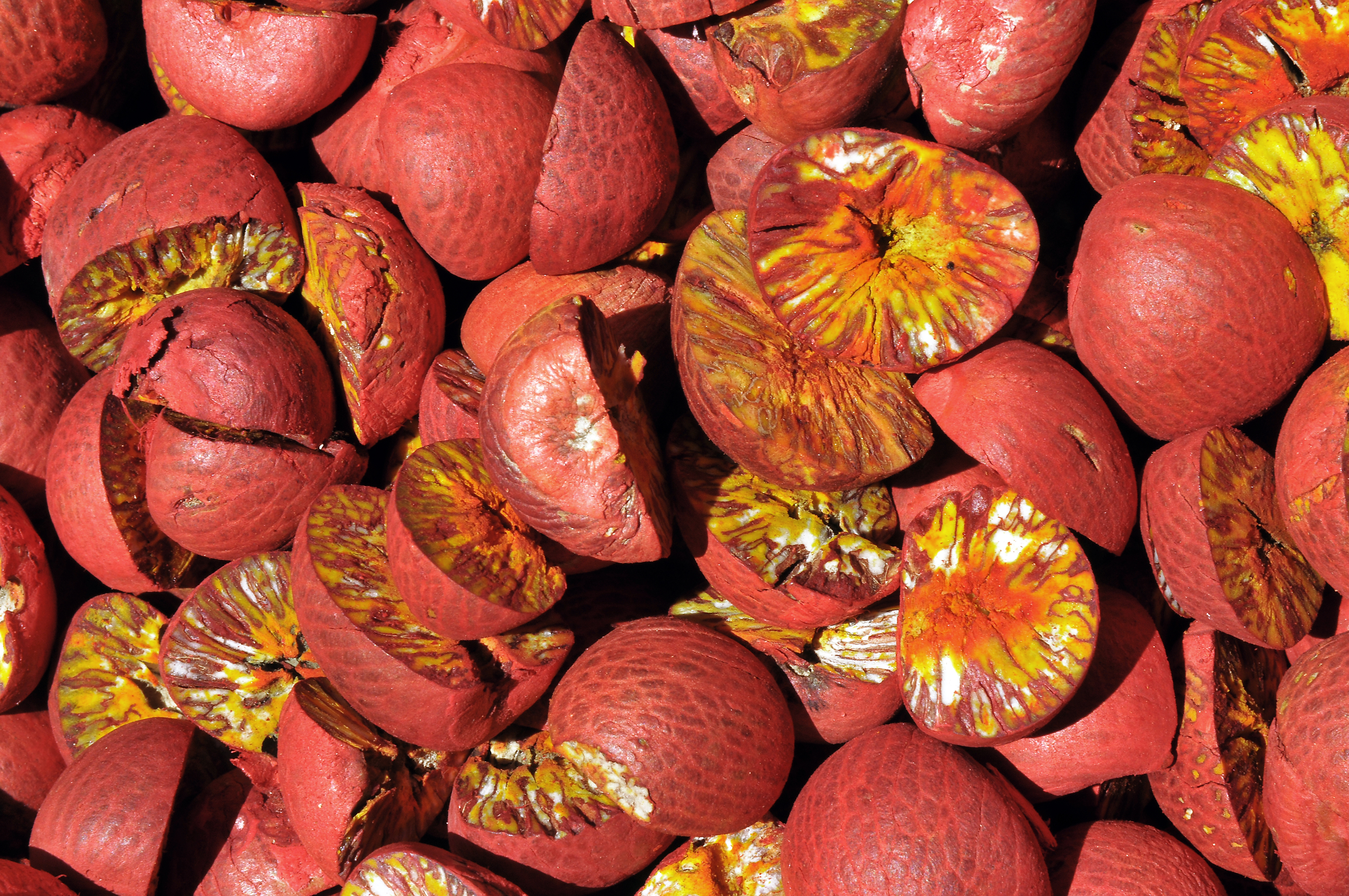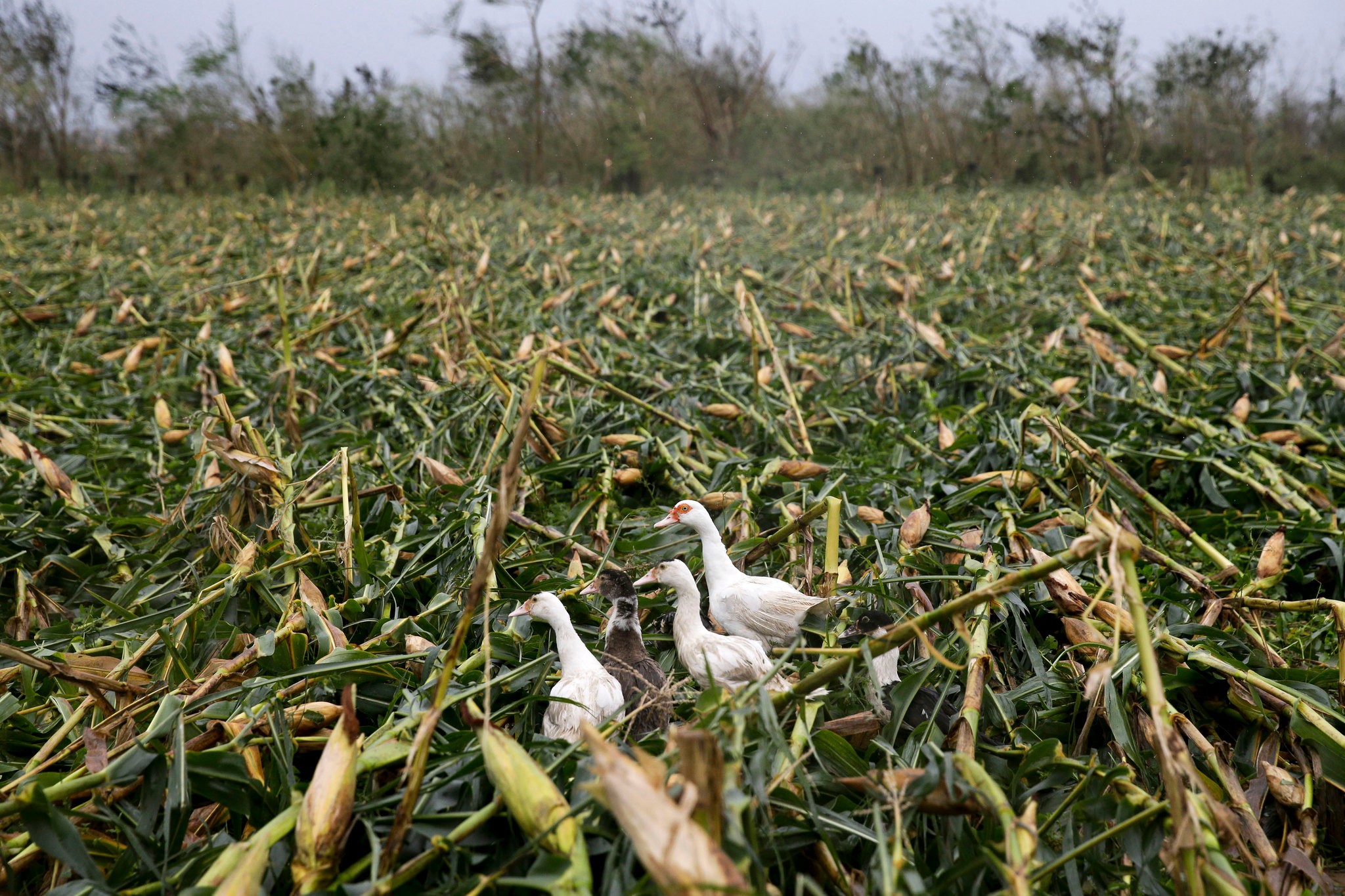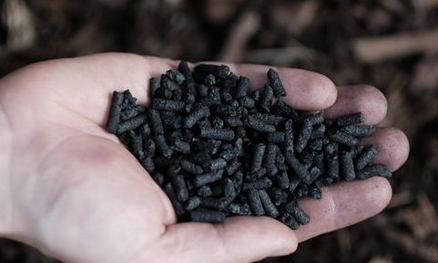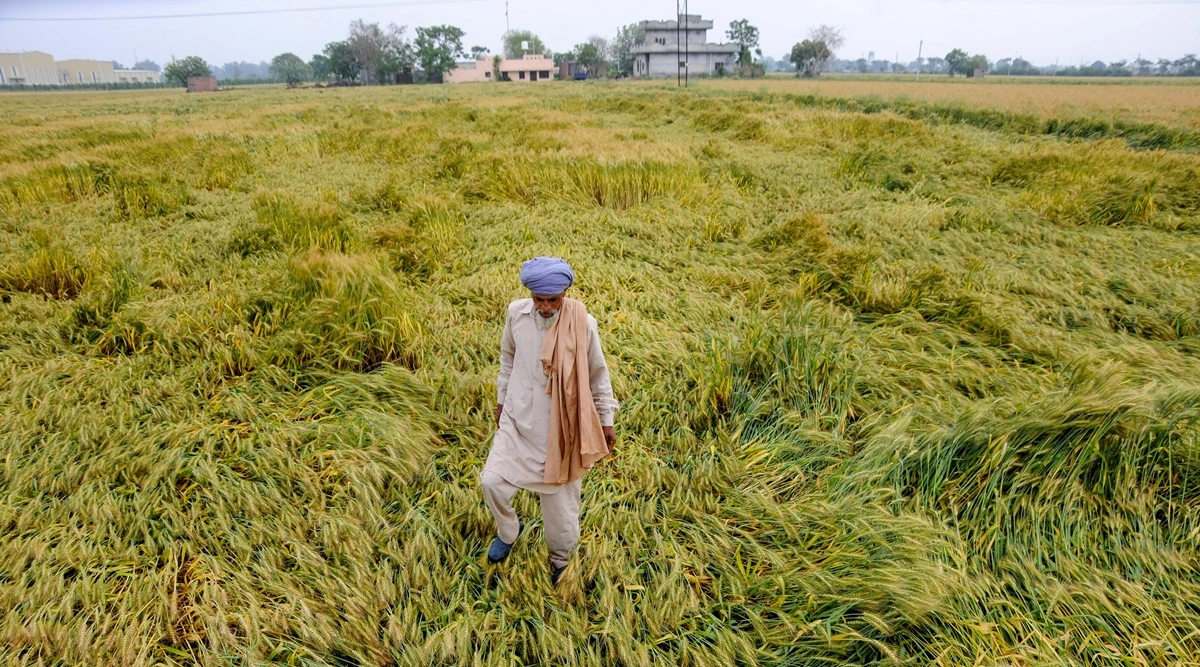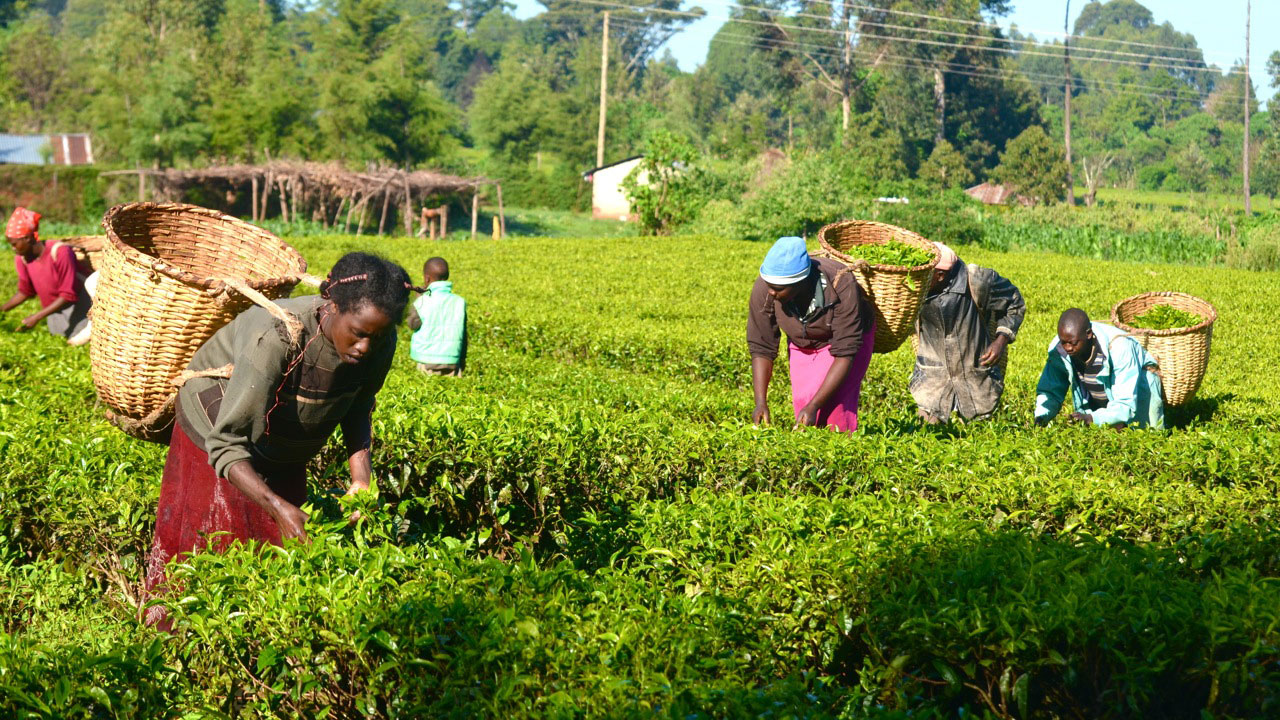Smallholder farmers in Africa are subject to many risks, some of them made worse by climate change. Well-targeted weather forecasts and crop insurance can help to limit losses and improve food security. It makes sense to link both services.
Droughts, storms and floods are threats to farmers everywhere. But the damage caused by extreme weather events can be reduced if farmers are forewarned by accurate weather forecasts. That allows them to adjust their practices accordingly.
Farmers in developed countries benefit from sophisticated weather forecasting services. These services boost their resilience because they help them to make better decisions. Farmers in poor countries are not so fortunate: Europe’s per capita annual expenditures on weather information services are about $ 16. In Africa, the figure is a mere two dollars. In developing countries, weather forecasts thus tend to be less accurate, less timely and less useful.
At the same time, crop insurances can contribute to managing financial risks. A very important option is called “weather-based index insurance”. It means that pay-outs depend on pre-defined weather conditions. This approach is especially important in developing countries because it requires much less administrative efforts than other kinds of insurance that are tied to actual damages, which, of course, have to be documented and assessed.
Various kinds of insurance against crop-damaging natural disasters are common in developed countries. For example, in the US more than 80 % of the major grain growing areas are insured. Smallholder farms in developing countries, by contrast, are typically uninsured.
Distinct strategies
Climate information services and insurance are two distinct strategies. Both help to manage the increasing risks that farmers face due to more frequent extreme-weather events. Climate-information services do not only generate relevant data, they also spread them in meaningful ways that support farm management. Insurance can help protect individuals, small businesses or entire countries from damage. For these reasons, the Global Commission on Adaptation – a 2018 initiative by 23 countries including Germany – calls on governments and the private sector to expand climate-information services and to explore climate-risk insurance for smallholders.
In developing countries, weather-based index insurances are a particularly useful option. The insurer pays when rainfall stays below a certain pre-defined minimum level in a specified time period for example. That is equally the case when rainfall exceeds a pre-defined maximum level. Similar indices can be defined for storms, heat waves et cetera. Insurance payments are triggered as soon as local weather stations or satellite surveillance prove that such a pre-defined limit has been breached.
It matters very much that farmers do not have to prove actual crop losses in order to receive the payment. It means that administrative costs are lower since no claims-investigation process is needed to assess crop damage. Accordingly, pay-outs to farmers tend to be faster. Lower administrative costs, moreover, imply that farmers pay lower premiums.On the other hand, index-based crop insurances have some downsides. One is that the insurance pay-outs will differ from actual losses. That happens, for example, when rainfall on the insured plot differs from the regional estimates. Moreover, this kind of insurance does not protect farmers from losses caused by other reasons.
Multiple risks
“Farmers usually deal with multiple risks,” explains Claudia Ringler of the International Food Policy Research Institute (IFPRI). Relevant risks include pests, spikes in input prices, health problems or the death of a relative. Yet insurance policies usually deal with a narrowly defined range of weather events. Ringler insists that more must be done to link index insurances with other risk-management practices.
As a first step, it would make sense to combine the promotion of weather-index crop insurance to the improvement of climate information services. The point is that these services can be mutually reinforcing. A better understanding of weather risks will make more farmers buy crop insurance, but also improve their decision making. As a result, their probable losses will be reduced, so insurance premiums could become less costly as well. More affordable premiums, of course, are an incentive to buy insurance.
Zambia’s initiative
Zambia’s government – along with entrepreneurs and donors – is working towards establishing a closer link between climate-risk insurance and climate-information services. About 1.5 million Zambian farmers are smallholders who depend on rain-fed agriculture. Climate change is gradually reducing their yields and increasing their post-harvest losses.
Zambia’s Meteorology Department has been working toward delivering more reliable climate and weather information. However, the national climate policy does not prioritise meteorology, and the network of weather stations is not dense enough to provide sufficient coverage.
“At the moment, we have about 41 manually operated weather stations and 107 automated ones across the country,” says Micah Namukoko of Zambia’s weather service. More are needed, the senior meteorologist points out: “We should have one manual station in each of our 117 districts, and an automated station in each of our over 1,800 agricultural areas.”
In Zambia, index-based weather insurance for smallholder farmers is still relatively new. The system faces many shortfalls in technical knowhow and insurance monitoring systems. There are also not enough programmes to educate farmers about crop insurance. More farmers would buy this insurance if they were better informed about what insurance policies are available, and if those policies better matched the farmers’ needs.
Improving the link between climate services and crop insurance is a focus of “Climate Risk Insurance and Information in Zambia” (CRIIZ), an initiative funded by the German Federal Ministry for Economic Cooperation and Development (BMZ) and implemented by Germany’s bilateral development agency GIZ (Deutsche Gesellschaft für Internationale Zusammenarbeit).
In collaboration with the Zambian Ministry of Agriculture and other public and private-sector groups, the project aims to improve the access of 100,000 Zambian farmers to information about climate-related risks and bring climate-related insurance to 30,000 farmers.
The project emphasises involvement of the private sector. For example, CRIIZ supported several agribusinesses to provide climate-risk insurance to several thousand farmers in the past farming season. By increasing the number of such private-sector solutions, project managers hope to create a sustainable ecosystem for weather-based crop insurance.
One Zambian company working to reduce its exposure to climate risks is Community Markets for Conservation (COMACO), a social enterprise that supports wildlife conservation and trains small-scale farmers in sustainable agriculture. With support from the BMZ-funded “Green Innovation Centres for the Agriculture and Food Sector” project, COMACO has supported over 130,000 farmers since 2015 and earned a profit of $ 890,000 in 2020 (see box).
COMACO buys raw crops such as groundnuts and soybeans, processes them and sells higher-value food products across Zambia. But in recent years, weather extremes caused major yield losses, especially in groundnuts. Accordingly, the company’s interest in improved weather forecasts has grown.
Feedback from farmers
Designing a well-targeted weather service and creating an effective climate-insurance product both require a good understanding of farmers’ needs. However, Zambia does not have strong mechanisms for collecting feedback from farmers. To close the gaps, CRIIZ is surveying groundnut and dairy farmers in Zambia’s Eastern and Southern Provinces. The goal was to find out what kind of information they need to better adjust their practices. The survey relies on an evaluation system called Participatory Integrated Climate Services for Agriculture (PICSA). It has delivered good results in 20 countries according to Peter Dorward, who teaches at the University of Reading and contributed to developing the system.
In light of the unfolding global climate crisis, it makes sense to link better weather-information services with more targeted weather-based crop insurance. That is obviously true far beyond Zambia.
Source - https://www.dandc.eu

